 Sabayon is a multi-purpose, Gentoo-based Linux distribution. It is part-source, part-binary distribution. I just call it a hybrid distribution. The latest update, Sabayon 5.3, was made available to the public in early June. Installation images are available for the GNOME, KDE, LXDE and Xfce desktop environments. This review is based on the GNOME edition.
Sabayon is a multi-purpose, Gentoo-based Linux distribution. It is part-source, part-binary distribution. I just call it a hybrid distribution. The latest update, Sabayon 5.3, was made available to the public in early June. Installation images are available for the GNOME, KDE, LXDE and Xfce desktop environments. This review is based on the GNOME edition.
The main purpose of the reviews published on this site is to give readers a good idea of what they would experience if they actually downloaded and installed the distribution on their computer. It is, therefore, necessary to highlight good features, or features I think will lead to a positive user experience. It is also necessary to highlight badly implemented features, or features that could give a negative user experience. For this review, let’s begin by looking at the features I think you’ll like on Sabayon (5.3).
Anaconda – Because Sabayon 5.3 uses the latest edition of Anaconda, the Fedora installation program, you can configure full disk encrypted LVM just by clicking a checkbox (LVM is the default disk partitioning scheme). You may also encrypt individual logical volumes. Installation to remote storage devices (connected to mainframes and SANs) is also possible. RAID configuration is supported. Sabayon is one of the first distributions with support for btrfs, the B-tree File System. Btrfs is one of the newest file systems in the Linux kernel, and could replace ext4 as the default filesystem on all Linux distributions in about a year (it is already the default on MeeGo). You may read how to install Sabayon 5.3 on a btrfs-formatted file system.
Magneto – Magneto is Sabayon’s applications updates notification tool. It is the first application that runs soon after you login. This is what I expect to see on all distributions. On Mandriva, the updates notifier runs five minutes after you login, but on Sabayon 5.3, it runs the very second you login. It is in the list of Startup Programs. The number of packages that needed to be updated after the test system was installed was 377. With dependencies factored in, it came to 774 packages that needed to be updated. That is the value of an updates notifier. What I could not figure out about Magneto is how to configure how often it checks for updates. It appears after looking around the system that the frequency of updates checking is not configurable. Automatic updates checking is possible only after a reboot or login, or manually by right-clicking on Magneto applet and selecting Check for updates.
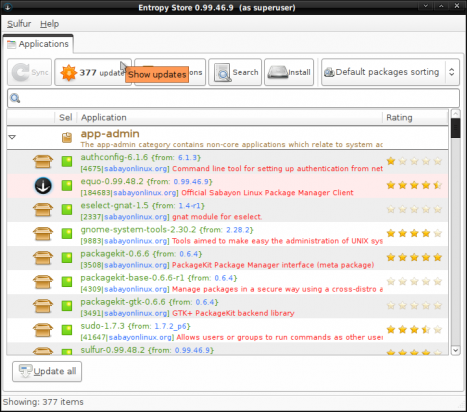
Magneto, Sabayon's updates notification tool
Applications – Sabayon ships with both free and non-free application either installed or in the repository. Libdvdcss, for example is installed by default. Though not installed, you will find Skype and several other non-free applications in the repository. XBMC, the media center application is installed and fully integrated into the system. XBMC is a brilliant application.
Sulfur – Sulfur is the graphical interface to Entropy, Sabayon’s binary package manager. It’s getting better with every release. It’s especially more fun to use in the advanced mode where there are more features available. One feature that is both good and bad is the search feature. Good because it is very fast, and bad because it cannot search across tabs. For example, if the Available tab is in focus, your search result will be limited to available packages.
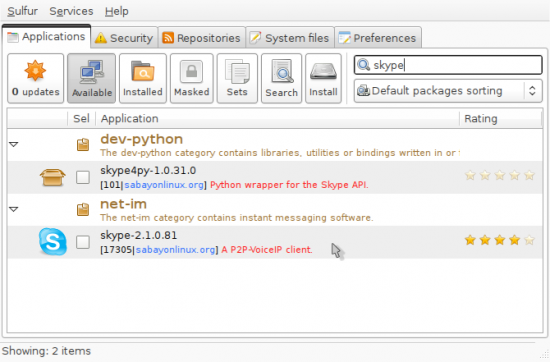
Sabayon's graphical package manager
Ok, those were the noteworthy good stuff about Sabayon 5.3. Now, let’s see a few issues that could sour your user experience. It starts with…
Anaconda – Aside from all the advanced features available on Anaconda, the developers have not be able to make it work as flawlessly as it does on Fedora 13.
The few articles That have been published on this site about Sabayon 5.3 were based on the Xcfe edition. An observation I made in one of those articles is that trying to install Sabayon 5.3 without booting into the live environment (Sabayon comes as a live CD/DVD) caused the installation to fail. And I thought that was just a problem with the Xfce version.
However, I experienced the same (and worse) with the GNOME and KDE versions. In the KDE version, for instance, the installation failed whether initiated from the live environment or straight from the boot menu. I finally installed it by using the GNOME version from the live environment by accepting all the defaults. I think the problem with the installer is that trying to select non-default choices will cause it to fail.
Aside from the installer’s problems, here a few other issues you should be aware of:
Firewall – The firewall is disabled by default, and there is no graphical firewall application installed. Also, there is new-user-friendly graphical firewall package in the repository. You come to realize the benefits of having a stateful firewall like IPTables running out of the box when you have to enable access to a server application like the openSSH server. Without the firewall running, remote access to the server is open to all. I am struggling to understand why the developers refuse to enable the firewall by default. I have been writing about this in all my Sabayon reviews and I’m sure that I will be writing about it when Sabayon 5.4 is released.
Printing: Most Linux/BSD distributions I’ve reviewed have been able to auto-detect and configure my test printer, a HP Deskjet F4280 All-in-One. When auto-configuration was not possible, I have been able to add the printer manually. But not on Sabayon 5.3. Auto-detection and configuration failed, and manually configuration failed, too.
Why is sudo Installed? Sabayon uses the root user account for granting administrative privileges to regular users. But Sabayon also makes the sudo utility available. So it appears that any regular user can use sudo to gain admin rights. My question then is this: What is the point of using a root user account, if regular users can use sudo to gain admin privileges? Unless there is something obvious that I’m missing, I don’t see how this makes any sense.
Users and Groups Utility – There are two entries for this tool in the System > Administration menu. Clicking on the second entry returns the error message shown in the image below. The first entry, however, works. So this is just a minor issue. Just edit the menu and delete the second entry. Question is, why did any body not spot this before this was released to the public? Am I nitpicking again?
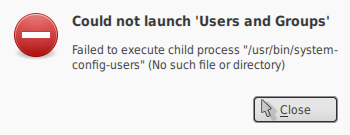
Users and Groups second listing error

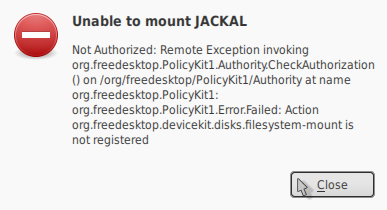

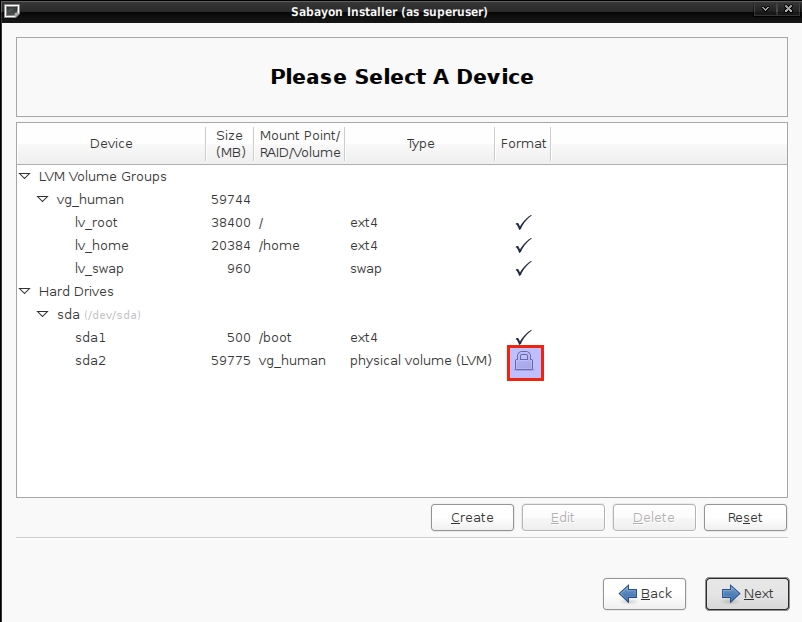
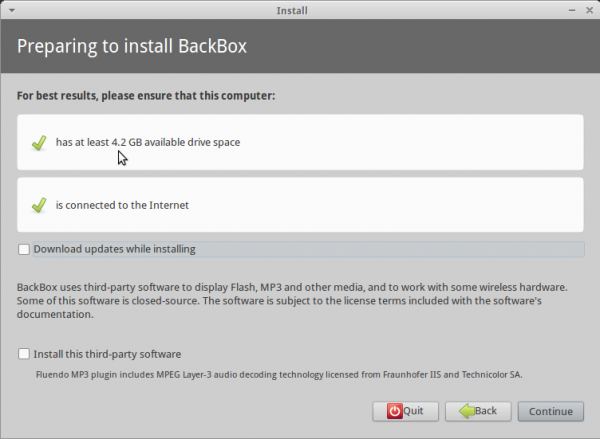
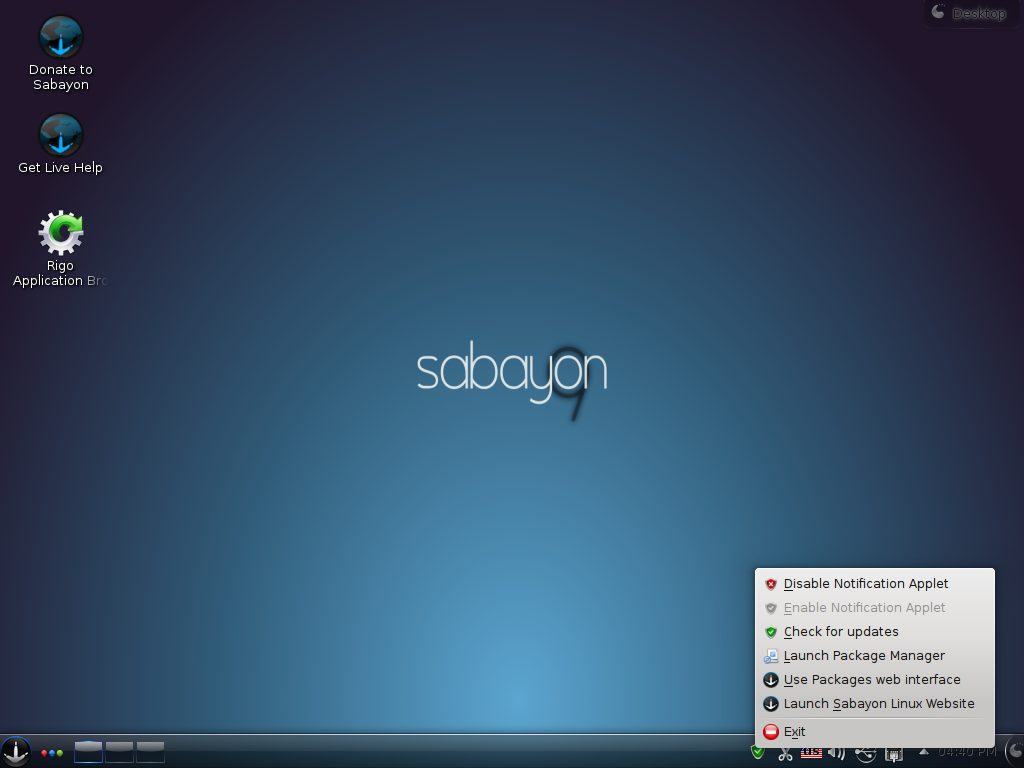


I gave Sabayon a spin a few months ago. I learned a great deal while playing around with it, and there is much to like in the Distro. However, the accumulation of minor irritations led me to abandon it back in April.
I keep thinking of giving it another go, but on the basis of this review, will probably wait and see what 5.4 looks first.
Interesting comments from some of the Sabayon Linux devs about issues raised in this review.
a great distro for those who are starting with linux… easy to maintain too, sadly this is not for me.
Even with a root account, sudo makes sense to have, especially when it is configured to not allow starting a root shell (or running a command that can create a shell). For one, it allows sharing admin access without sharing the root pass word. For another, it allows granting only a subset of commands. In fact, each user can be granted a different subset of commands. Also, properly configured, sudo will provide better logging of who ran what commands as root.
In specialized usage environments, sudo has its place, but on a desktop distribution pushed out to the general public, I do not see the need. On a distro using the root account system, sudo is one of those facilities that should not be installed by default, but be left to those that need it to install and configure.
Sabayon was my very first Linux Distro and it was a great place to start for someone with no experience in Linux. The community is fun and the developers are pretty cool folks. The Distro is a nest of bugs however, and the Developers are really not very interested in cleaning them up because they are too busy with future development, or they are simply not interested in fixing them.
Sabayon has strong and deep roots in Gentoo, a community that has a legendary reputation for being the very first among newby unfriendly Distro’s. Alot of the Gentoo attitude spills over into this Distro and you will see RTFM thrown around from time to time, and you will learn something about Linux, like it or not as I did. I appreciate Sabayon for helping me learn the fundamentals of Linux, and for teaching me that there is definitely greener pastures in Linuxland out there, like Fedora, Ubuntu, and ArchLinux.
The worst part of Sabayon experience is criminally bad support to setup static IP address.
Just look on the net, everyone is having problems with this.
I ended up being forced to use net-setup to set the static IP every time I boot the OS! It just forgets the setting one each reboot !!!!